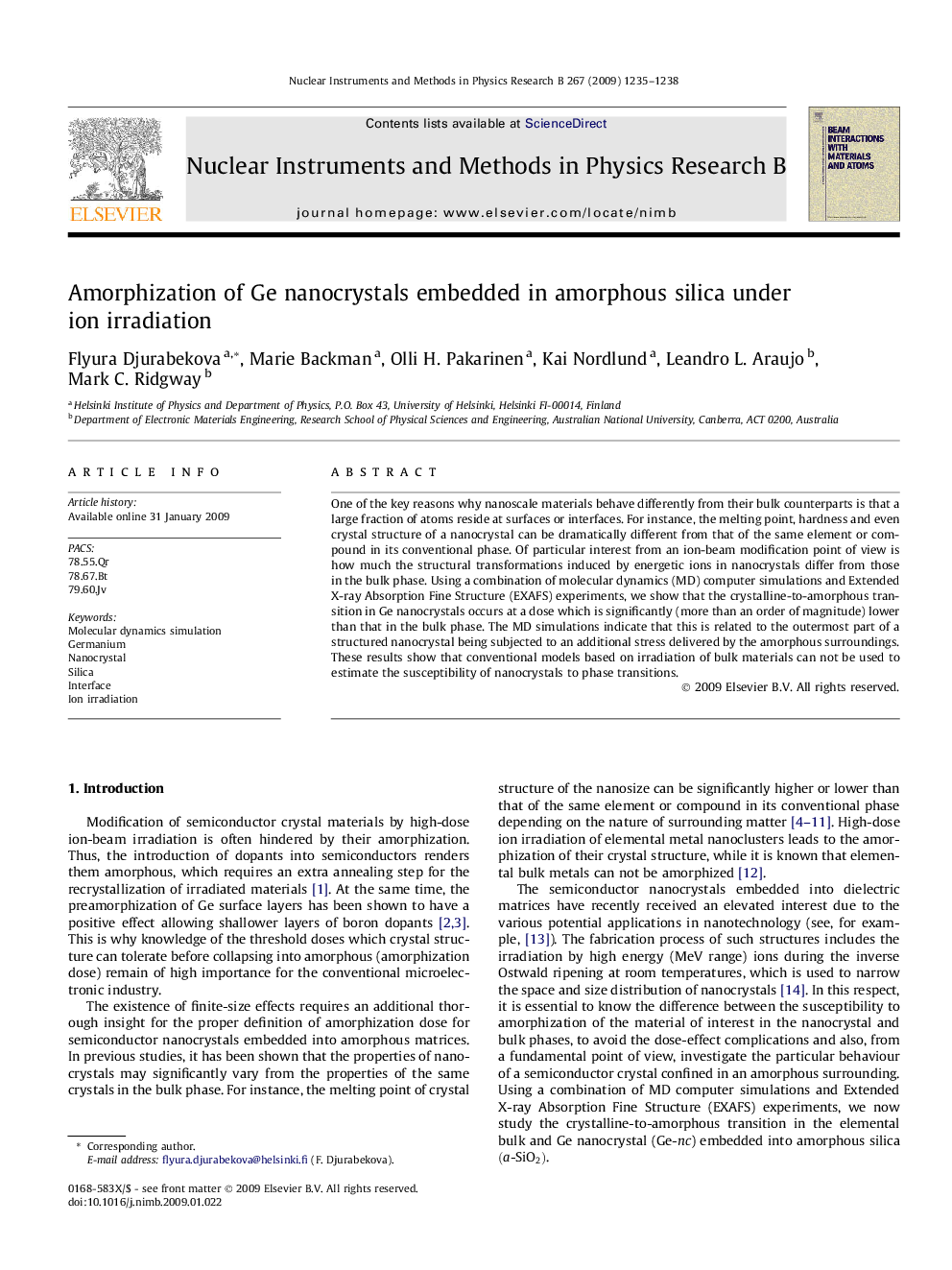| Article ID | Journal | Published Year | Pages | File Type |
|---|---|---|---|---|
| 1683916 | Nuclear Instruments and Methods in Physics Research Section B: Beam Interactions with Materials and Atoms | 2009 | 4 Pages |
Abstract
One of the key reasons why nanoscale materials behave differently from their bulk counterparts is that a large fraction of atoms reside at surfaces or interfaces. For instance, the melting point, hardness and even crystal structure of a nanocrystal can be dramatically different from that of the same element or compound in its conventional phase. Of particular interest from an ion-beam modification point of view is how much the structural transformations induced by energetic ions in nanocrystals differ from those in the bulk phase. Using a combination of molecular dynamics (MD) computer simulations and Extended X-ray Absorption Fine Structure (EXAFS) experiments, we show that the crystalline-to-amorphous transition in Ge nanocrystals occurs at a dose which is significantly (more than an order of magnitude) lower than that in the bulk phase. The MD simulations indicate that this is related to the outermost part of a structured nanocrystal being subjected to an additional stress delivered by the amorphous surroundings. These results show that conventional models based on irradiation of bulk materials can not be used to estimate the susceptibility of nanocrystals to phase transitions.
Keywords
Related Topics
Physical Sciences and Engineering
Materials Science
Surfaces, Coatings and Films
Authors
Flyura Djurabekova, Marie Backman, Olli H. Pakarinen, Kai Nordlund, Leandro L. Araujo, Mark C. Ridgway,
